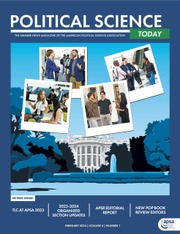Generally, when people think of sovereignty, supreme authority, or power, they think about kings, queens, or a formal institution that makes and enforces laws. Wars typically serve as critical events to enforce such sovereignty, but how?

In their newly published APSR article, Melissa Lee, Nan Zhang, and Tilmann Herchenröder investigate how war shapes the popular imagination of sovereignty. To this end, this paper argues that institutions alone do not make the state. Instead, the authors contend that for sovereign authority to be effective, it must be recognized and accepted by those they govern.
The authors propose two potential ways wars could influence the public perception of sovereignty – valence and reversal. The valence perspective centers on entrepreneurs and leaders who promote ideas that give meaning to war and help the public understand the sacrifices the conflict demands. In the aftermath of loss, the reversal perspective predicts that dissatisfaction and the humiliation of defeat will inspire a new search for meaning that embraces the victor’s ideals and allows new principles to emerge.
Applying these mechanisms to the case of the American Civil War and the competing visions about sovereign authority between the North and the South, the authors hypothesize that, in a valence pathway, the Civil War should strengthen popular attachments to a national concept of sovereignty in the North, especially among Republican supporters. After a defeat, a reversal pathway should increase attachments to a national idea of sovereignty in the South.
To test the hypotheses, the authors utilize a strategy that calculates the shift of the term “United States” from a plural to a singular noun as a proxy for the popular imagination of sovereignty. The plural usage of the word infers that Americans view the US as having multiple sovereignties embedded within the several states, and a singular use indicates that Americans view the US as a single national sovereignty.

United States One Cent Pieces, original start dates, placed on American Flag (Getty Images/tab1962).
The authors analyzed local newspapers from 1800-99 in states that participated in the war. The authors found no significant difference between Northern and Southern newspapers in singular and plural language patterns before the war. After the war began, the transition from plural to singular occurred faster in the North, suggesting that the war promoted a greater adoption of national sovereignty in the North in the popular imagination.
Beyond local newspapers, the authors also examined the partisan identification and language patterns of individual US congressional members’ speeches from 1851-99. They found a consistent partisan gap in adopting singular usage following the war. Supporting the valence hypothesis, imagined sovereignty was heavily concentrated among Northern Republicans who used the Civil War to advance their ideals about a singular national sovereignty. No evidence of the reversal hypothesis was found.
This article is important because it shows that the violence of war and the institutional change that occurs as a result do not imply that ideational change will follow. Political leaders and ideological entrepreneurs play a significant role in mediating the impact of war on sovereignty and social and political change more broadly.
LEE, MELISSA M., NAN ZHANG, and TILMANN HERCHENRÖDER. 2023. “From Pluribus to Unum? The Civil War and Imagined Sovereignty in Nineteenth-Century America.” American Political Science Review, 1–17. https://doi.org/10.1017/S0003055423000096




